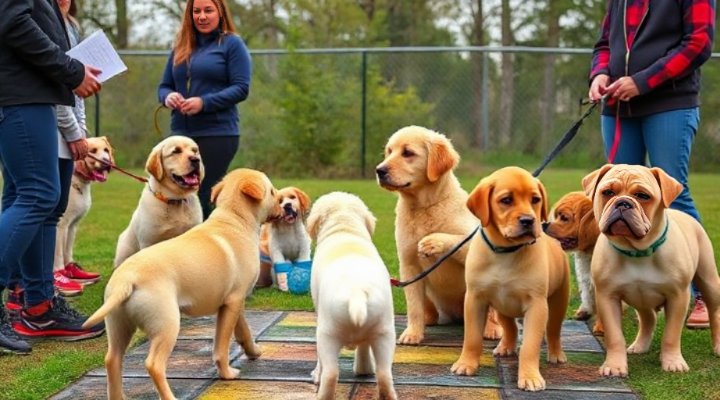Obedience training for puppy is not just about teaching commands; it’s about building a lifelong bond with your furry companion. Whether you’re starting with basic commands or moving to advanced techniques, consistency and patience are key. In this guide, we’ll walk you through everything you need to know to raise a well-behaved dog.

Basic Obedience Training for Puppies
Starting with basic commands like ‘sit’, ‘stay’, and ‘come’ lays the foundation for all future training. According to the American Veterinary Medical Association, early training significantly impacts a dog’s behavior as an adult. For more detailed techniques, check out our article on Puppy Training: A Comprehensive Guide.
Positive reinforcement is the most effective method. That is to say, reward your puppy immediately when they perform the desired behavior. For instance, use small treats or verbal praise to encourage repetition. Meanwhile, avoid punishment-based techniques as they can lead to fear and anxiety.

Essential Commands Every Puppy Should Know
Firstly, teach ‘sit’ by holding a treat above your puppy’s nose and moving it backward. As their head follows the treat, their bottom will naturally lower. Secondly, ‘stay’ builds impulse control. Start with short durations and gradually increase the time. Most importantly, keep training sessions short (5-10 minutes) to maintain your puppy’s attention.
If you’re struggling with leash training, our guide on Leash Training a Puppy offers step-by-step solutions. Similarly, crate training can be incredibly helpful; learn more in Crate Training Puppy.

Advanced Obedience Techniques
Once your puppy masters the basics, you can move to advanced commands like ‘heel’, ‘leave it’, and off-leash recall. These skills require more patience but are invaluable for safety and convenience. For example, a reliable recall can prevent dangerous situations at parks or near roads.
The American Kennel Club recommends gradually increasing distractions during training. Start in a quiet environment, then practice with mild distractions before attempting busy areas.

Troubleshooting Common Challenges
Some puppies may struggle with specific commands. If your puppy isn’t responding to ‘stay’, try reducing the distance and duration initially. Likewise, if they’re overly excited during training, incorporate calm exercises like ‘settle’ commands.
For puppies exhibiting behavioral issues, our article on Dog Behavior Problems Solutions provides expert advice. Remember, every puppy learns at their own pace, so avoid comparing your progress to others.

Maintaining Training Long-Term
Consistency is crucial for lasting results. Incorporate training into daily routines, such as practicing ‘sit’ before meals or ‘stay’ before opening doors. Furthermore, regular refreshers prevent regression, especially during adolescence when puppies test boundaries.
For ongoing support, consider joining our Puppy Training Classes. These provide structured learning and socialization opportunities that are invaluable for young dogs.
In conclusion, obedience training for puppy requires time and dedication but rewards you with a well-behaved companion for years to come. Start with basics, progress gradually, and most importantly, make training a positive experience for both of you.
Related Keywords: puppy obedience training, basic dog commands, advanced dog training techniques, positive reinforcement training, puppy behavior solutions

